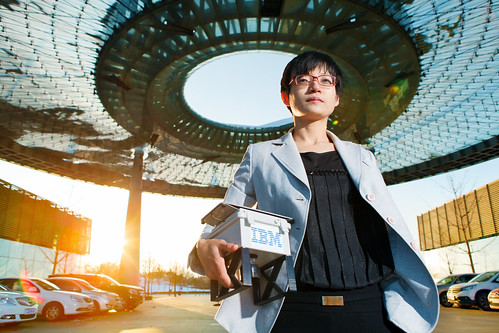Editor's note: This article is by Dr.
Alessandro Curioni, Vice President, Europe, and Director, IBM Research -
Zurich
“How much does Watson cost?”
I often get asked this question whenever I give a
lecture or speak with clients about cognitive computing.
My response is always the same: “What is the price
of not knowing?” And depending on who I am speaking to, the context could be
not knowing when the next devastating storm will arrive, what the next
maintenance failure on an aircraft will be, or even what’s going to be the next
fashion trend.
Right now, we don’t know a lot. Petabytes of data
are being created every second of every day, in large part by the Internet of Things (IoT). Yet, 90 percent of it,
which is often referred to as data on the edge, is never captured,
analyzed or acted upon — it essentially can’t be read by computers. For example,
only 1 percent of the data collected from an oil rig with 30,000 sensors is
examined for anomalies. To me that translates into a lost opportunity,
or worse a pending disaster.
Today, I’m in Munich, Germany, where IBM is
changing all of this as we bet big on a future IoT powered by IBM Watson and
cognitive computing. Munich is where this new business unit will be
headquartered, bringing together 1,000 IBM developers, consultants, designers
and researchers — representing IBM’s largest investment in Europe in more than
two decades.
As
the vice president for Research in Europe and director of IBM’s lab in Zurich, I’ll
be supporting this new unit globally to drive IoT research across all 12 of our
global labs.
Of course we aren’t starting from scratch. In March
2015, we announced a $3B commitment to IoT. More recently we
announced plans to acquire the Weather Company’s IT assets. It includes a
remarkable three billion weather forecast reference points, and a cloud platform
supporting 26 billion inquiries per day, mostly from mobile apps. Combined with
the dozens of Watson APIs available on IBM’s Watson IoT Cloud, this
platform will bring the promise of IoT to both small businesses and large
enterprises alike.
 In China, our Green Horizon
Project is using sensor data and analytics to generate high-resolution
1km-by-1km pollution forecasts 72 hours in advance. It can also make pollution trend
predictions up to 10 days into the future to warn citizens and to help
officials take action. Similar projects are taking place in South Africa
and India
as well.
In China, our Green Horizon
Project is using sensor data and analytics to generate high-resolution
1km-by-1km pollution forecasts 72 hours in advance. It can also make pollution trend
predictions up to 10 days into the future to warn citizens and to help
officials take action. Similar projects are taking place in South Africa
and India
as well.
Back home in Switzerland, my colleagues in Zurich
are working with IBM researchers in Dublin to bring the IoT to automobiles.
Cars make excellent sensor platforms since they have strong batteries and
are idle 95 percent of the day. The sensors can be used to find available parking
spaces or perhaps even more critically, they can detect gas leaks in a city's infrastructure.
So, what is the price of using cognitive computing and IoT to predict a gas
leak before it can do any harm? Priceless.
Follow Alessandro on Twitter @Ale_Curioni
Labels: IBM Research - Zurich, IBM Watson, Internet-of-Things, IoT, Munich

 In China, our Green Horizon
Project is using sensor data and analytics to generate high-resolution
1km-by-1km pollution forecasts 72 hours in advance. It can also make pollution trend
predictions up to 10 days into the future to warn citizens and to help
officials take action. Similar projects are taking place in South Africa
and India
as well.
In China, our Green Horizon
Project is using sensor data and analytics to generate high-resolution
1km-by-1km pollution forecasts 72 hours in advance. It can also make pollution trend
predictions up to 10 days into the future to warn citizens and to help
officials take action. Similar projects are taking place in South Africa
and India
as well.